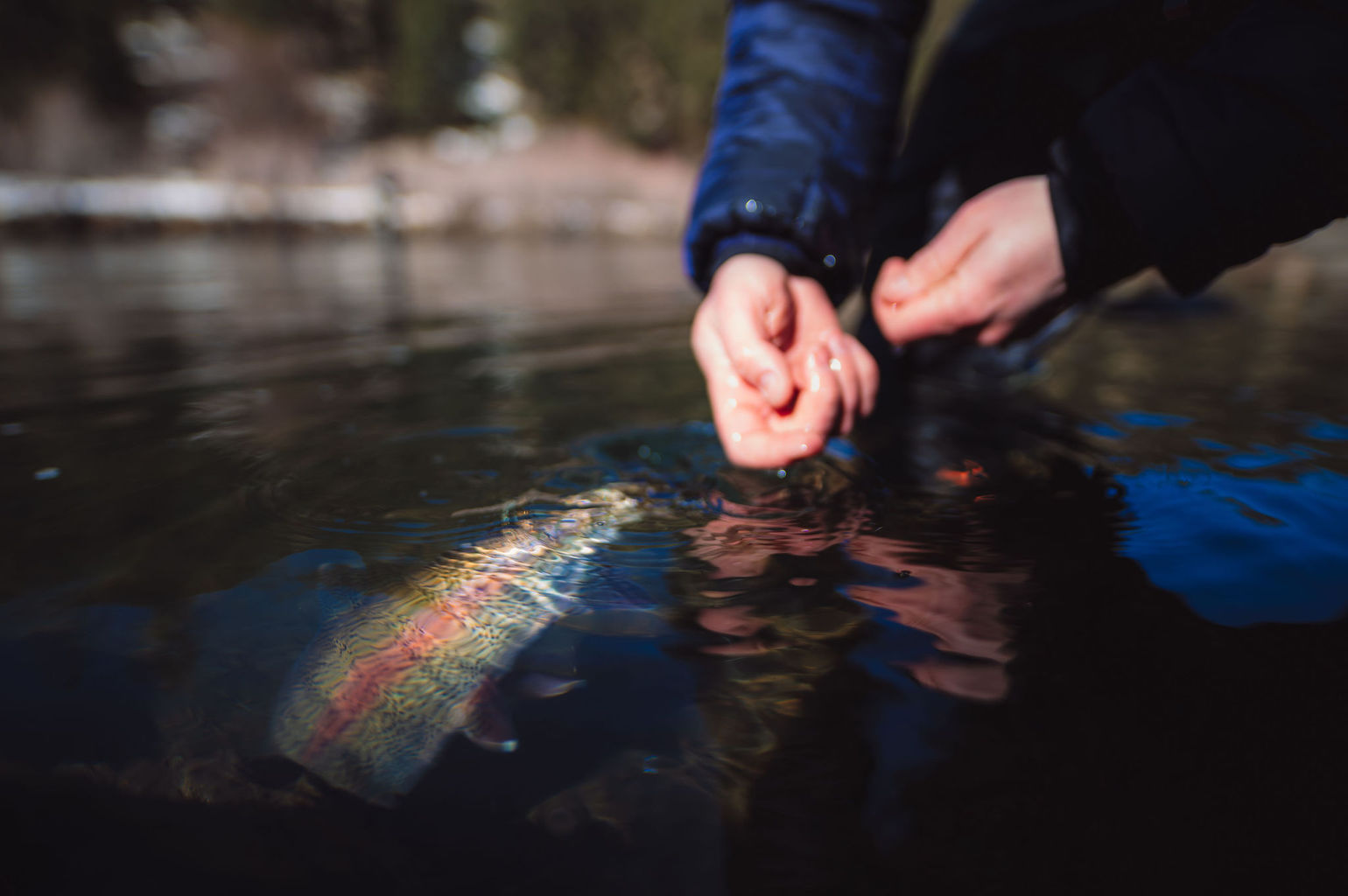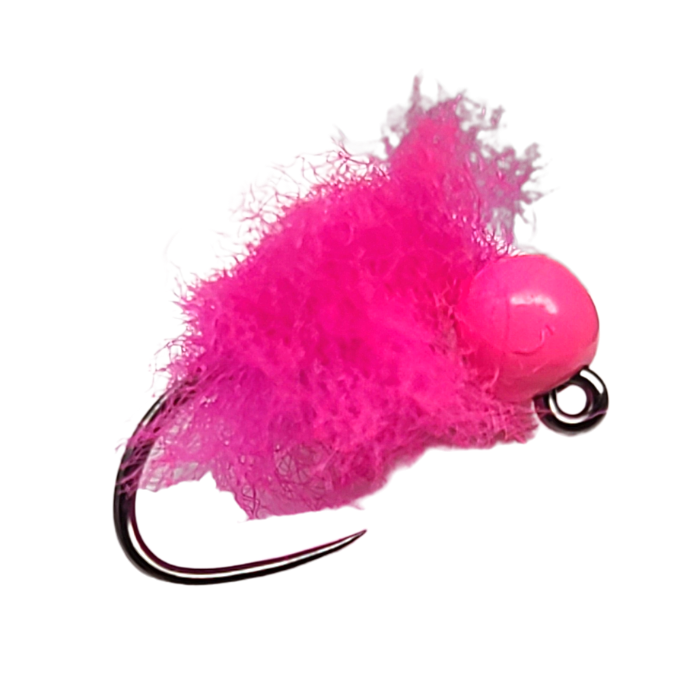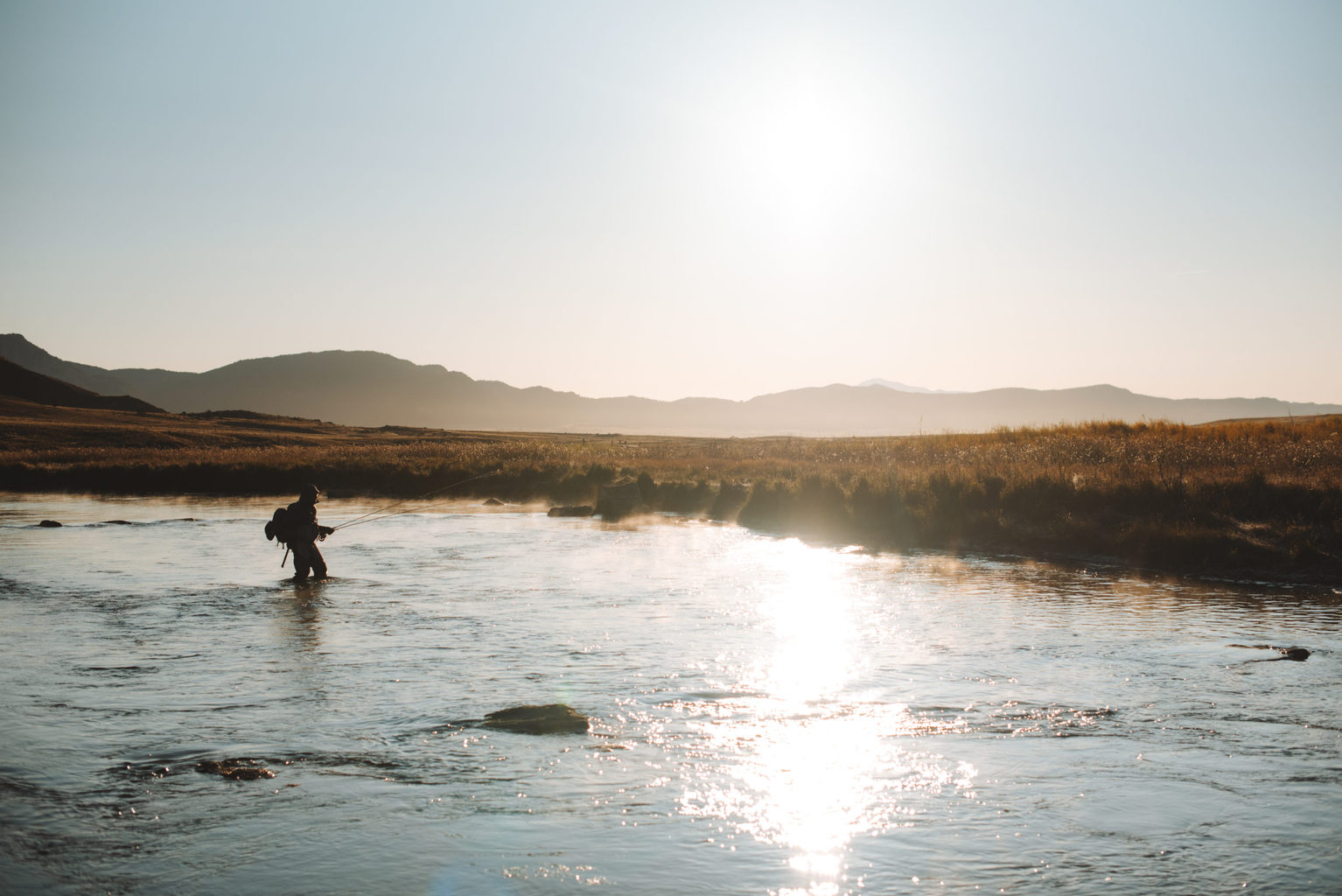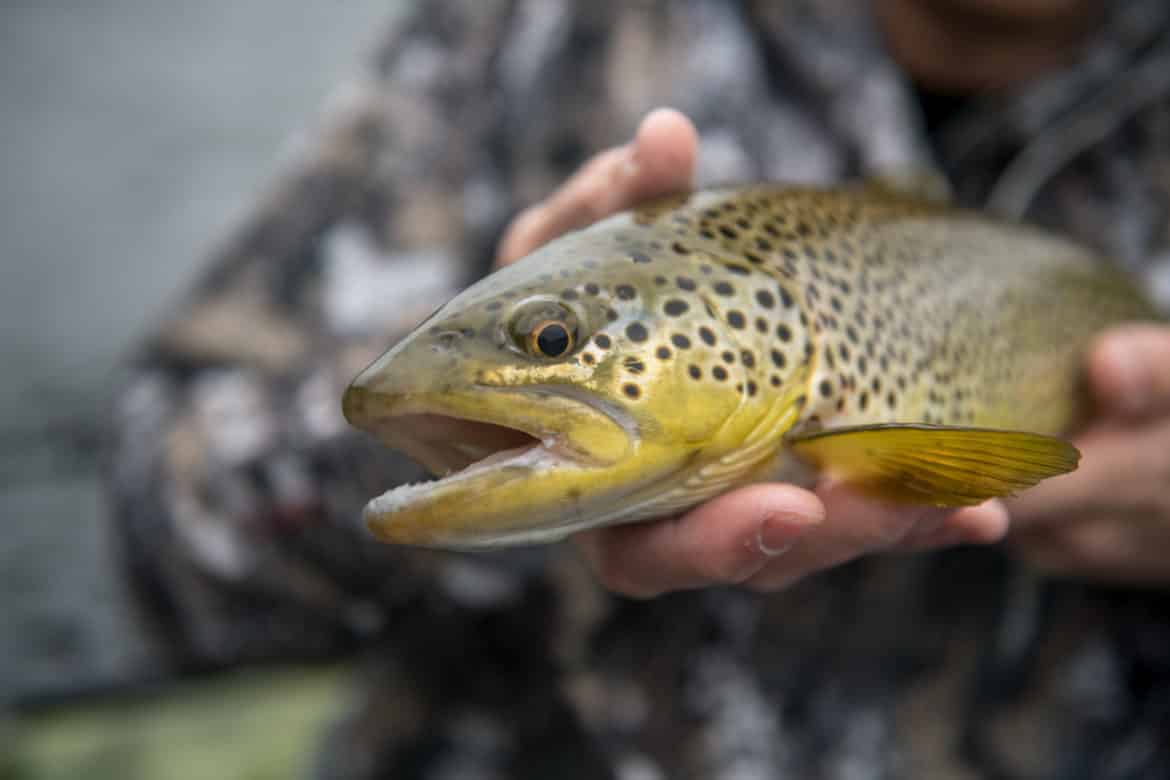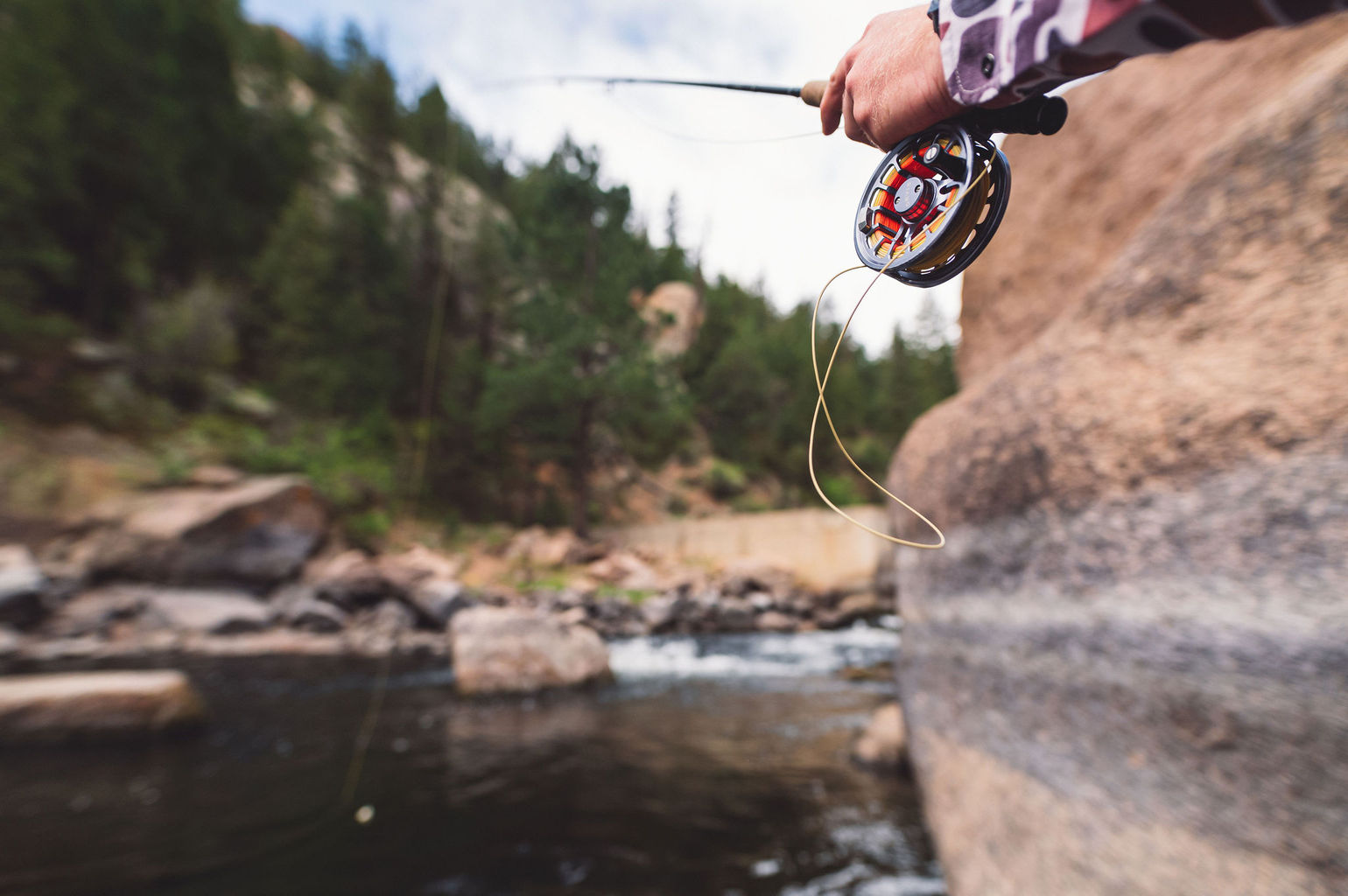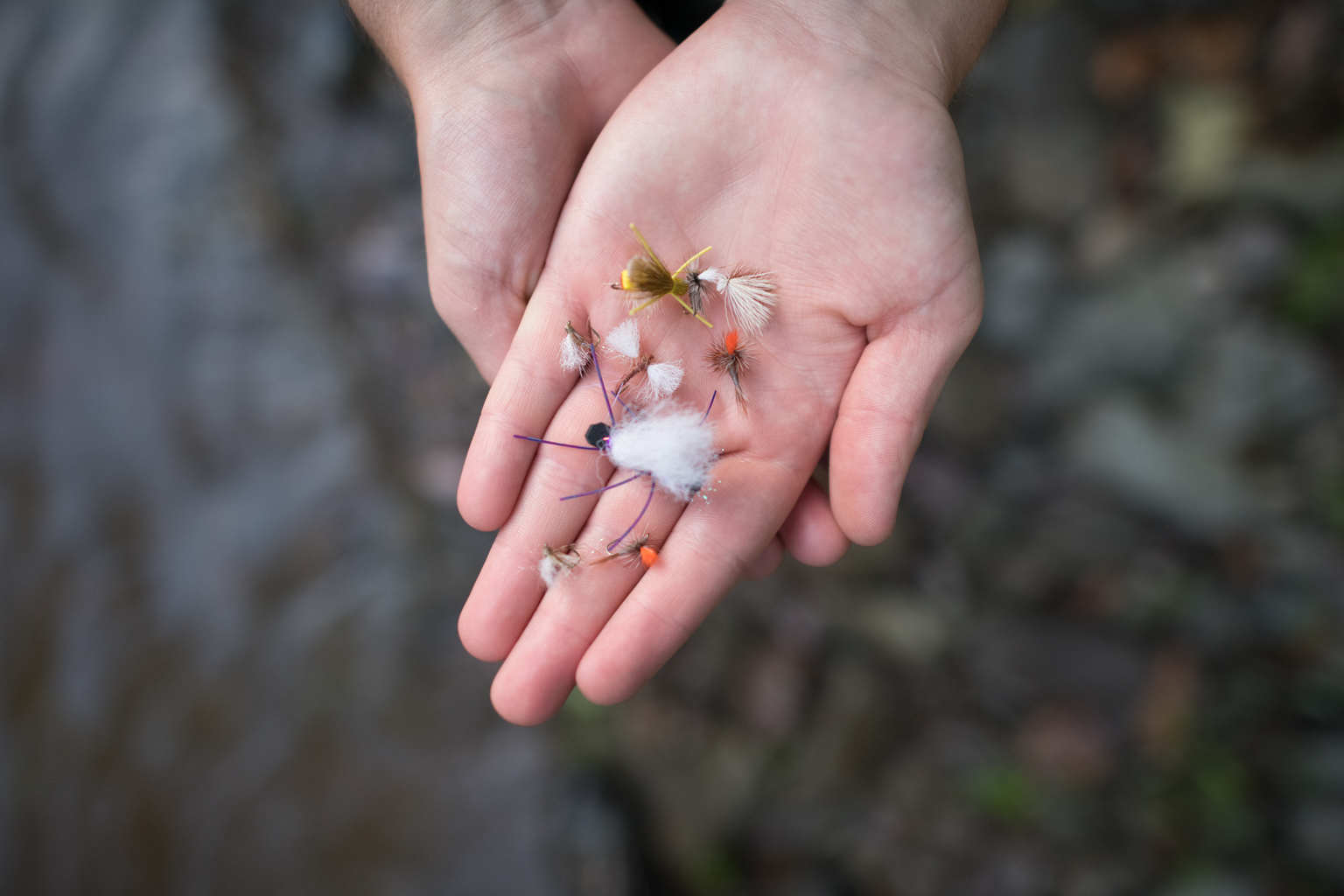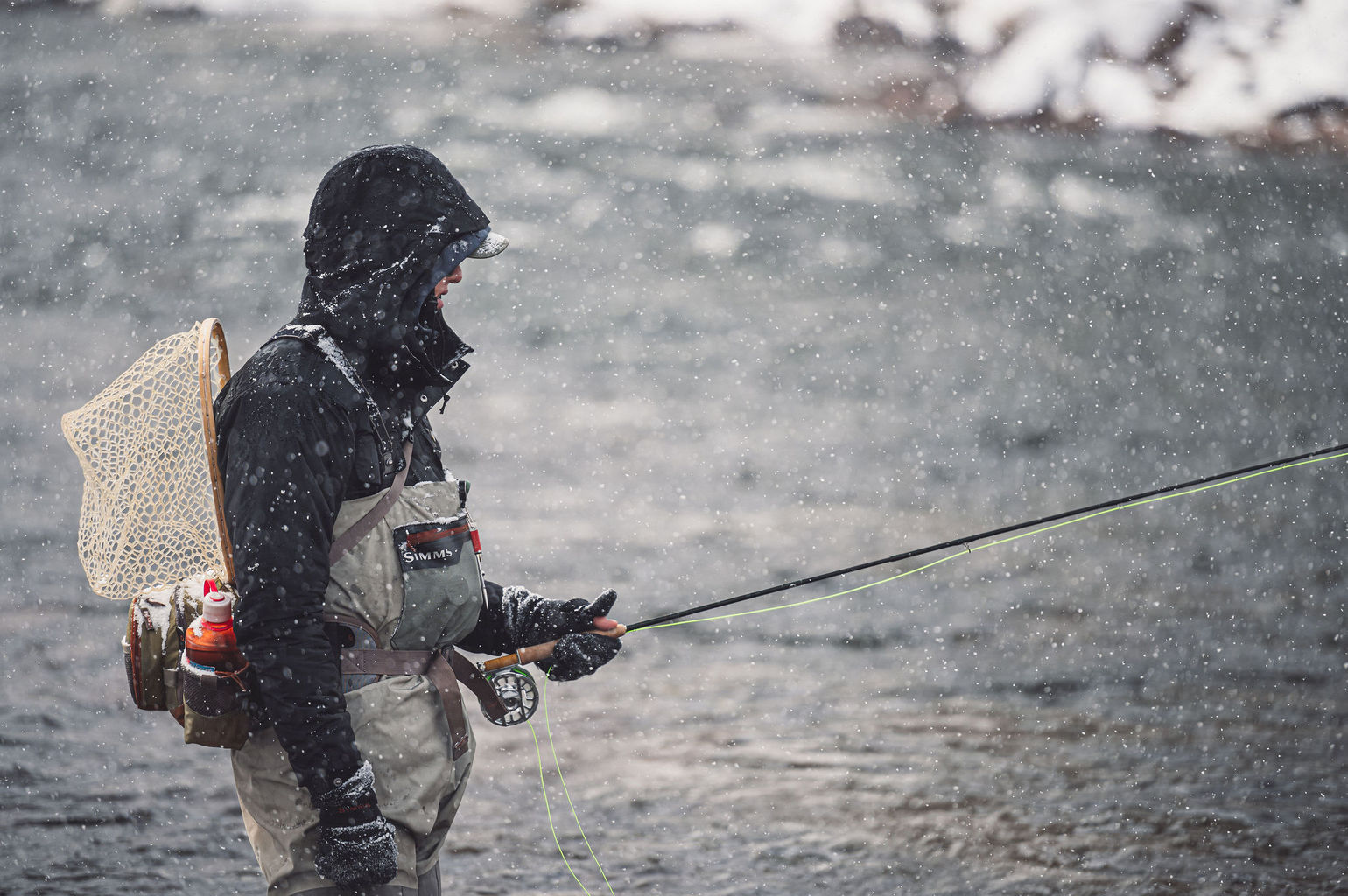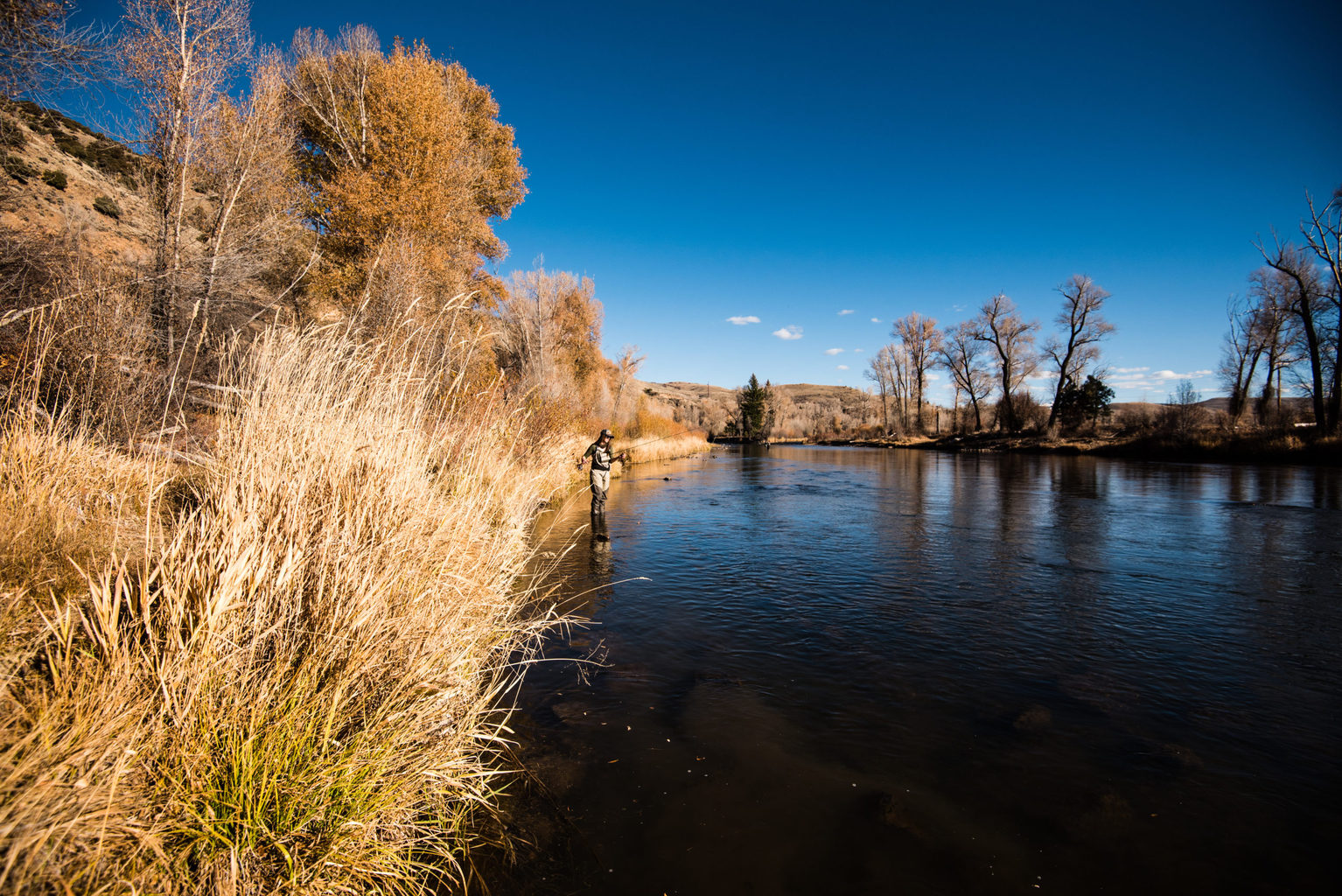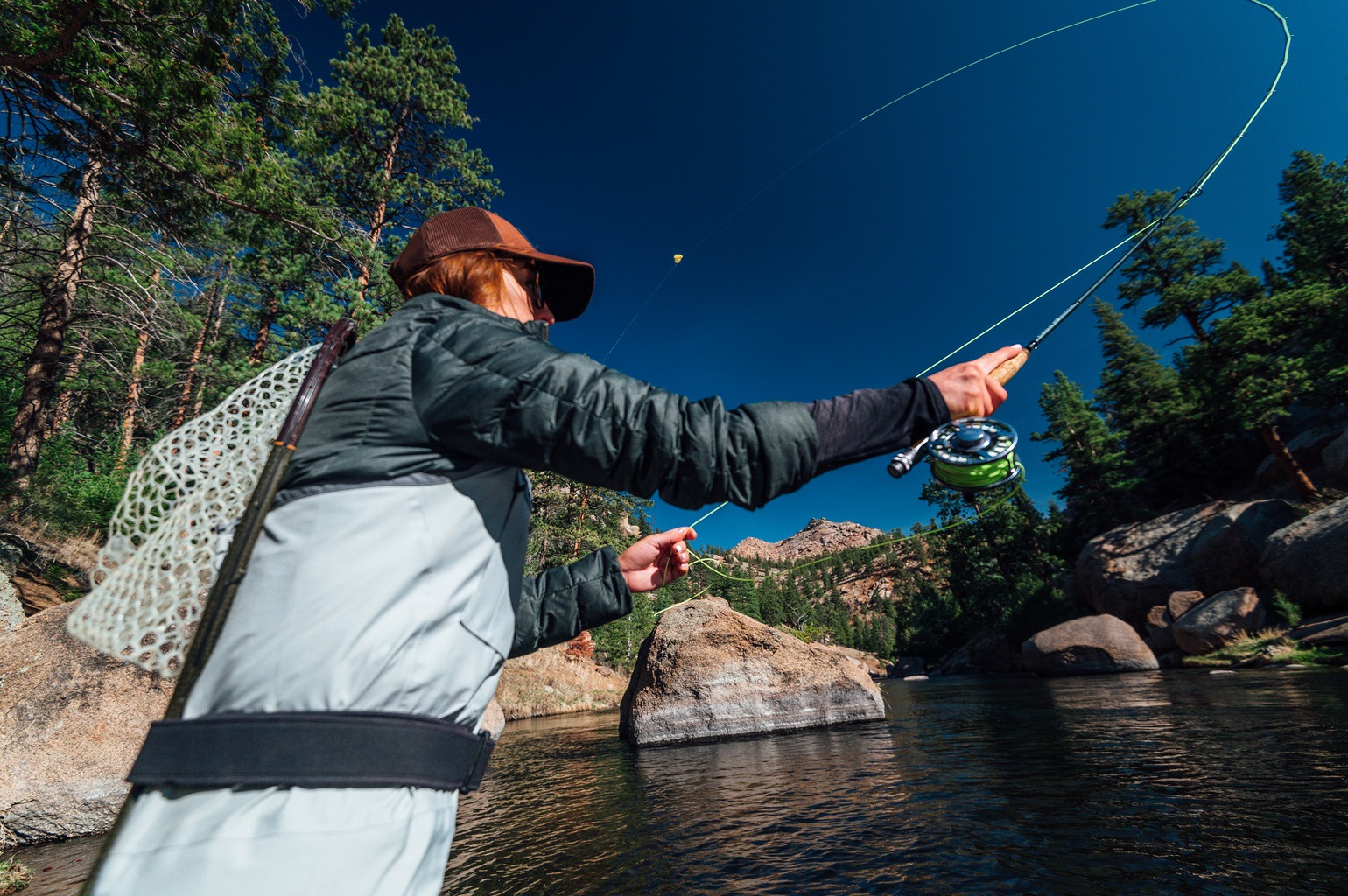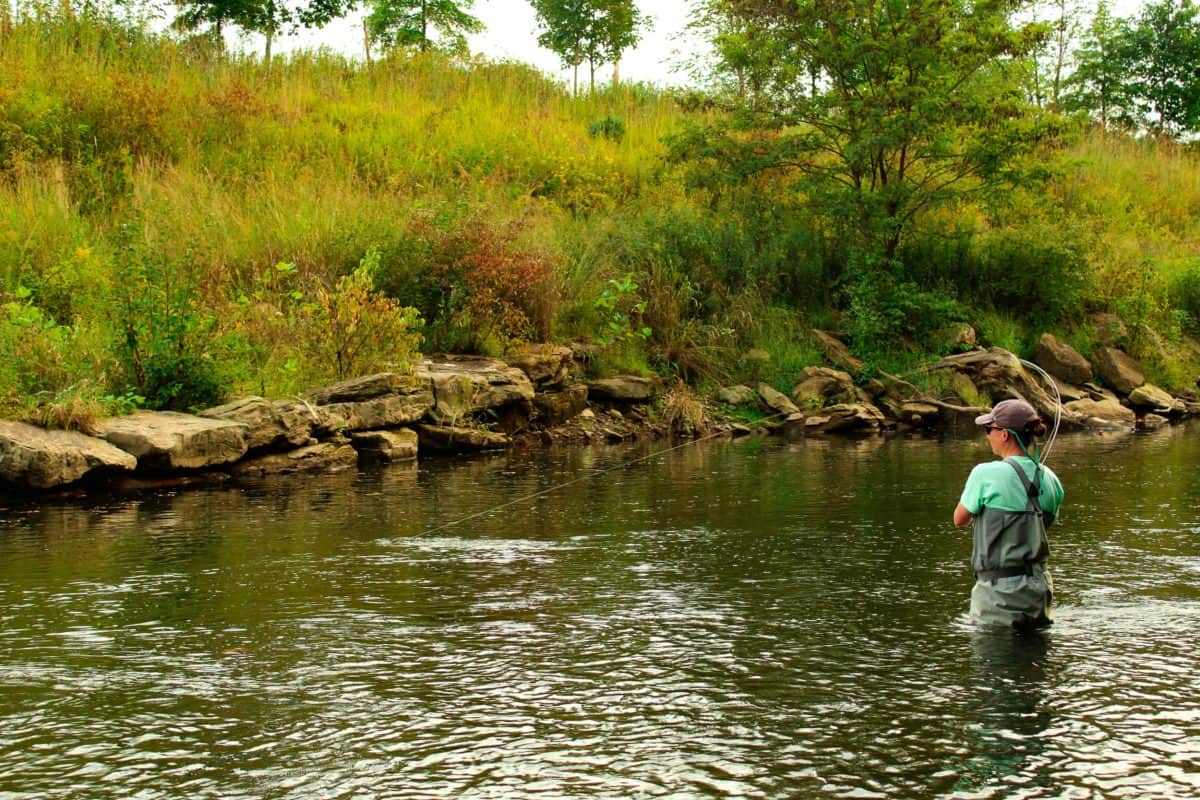What You Need To Know About Fly Fishing January And February
- Can you fly fish in January?
- Can you fly fish in February?
- Do trout like the cold?
- How do you catch trout in the winter?
- What time of day are trout most active in the winter?
- Where do you find trout in the winter?
- What are the best flies for January and February?
Can you fly fish in January?
Yes, you can fly fish in January and year-round with great success! As long as all the streams aren’t completely frozen over, you’ll be able to fish no matter the weather; even in the snow!
Contrary to popular belief, fly fishing in the winter can be a great time to hit the water.
There is little to no fishing pressure and there is still an abundance of insect activity. You’ll find dense midge hatches on tailwaters and spring-fed streams that remain at a near-constant water temperature throughout the year. In select streams, you can even run into blue-winged olive and small black stonefly hatches.
Can you fly fish in February?
Absolutely! Fly fishing in February is a great way to avoid the crowds and get some quality fishing in. As long as you come prepared with layers and know where the winter holding pools are, you’ll have a great time.
On warmer days, trout will move into faster-moving water to pick up on nymph activity and the remainder of the time you’ll want to fish slower deeper runs, side channels, and pools with structure.
Do trout like the cold?
Do trout like the cold? No, probably not. It’s important to note that most fish are cold-blooded and become lethargic during the extreme cold – even more so during a cold spell. This causes them to slow down their feeding habits drastically. So once a cold front leaves, it might be best to wait for 1 to 2 days for fish to get back into their feeding routines before going fishing.
Fish are still constantly feeding throughout the winter and there are still abundant insect hatches. You can go fly fishing no matter how cold it is and still catch fish, but fishing will be much easier when you plan your trips ahead of time around the warmest days of the week.
How do you catch trout in the winter?
Dry flies can still be effective during the winter months but need to be presented with greater skill and accuracy. You will want to target rising fish and lead them several feet with a well-placed cast. Make it easy for them. Cast so your fly will drift right into their face. Trout will rarely risk the calories and drift out of their feeding lane to take a fly.
Believe it or not, winter still is prime streamer fishing. However, they will rarely chase more than a few feet and the fly needs to be big enough to lure them out of their holes. Active trout will be found in skinner water than their winter holds, 2-feet to 4-feet in depth. Pick a weighted streamer fly that will be easy to fish in slow-moving, but too heavy where it drags on the bottom.
Target a specific area or an individual fish and cast to it so the streamer fly is shown to the fish and then flees. Basically, an in-and-out motion like how natural prey would act around predators.
Nymphing will be the most effective style of fly fishing during the winter for the simple reason that almost all of the feeding done will be subsurface. We would recommend using small strike indicators and multi-fly rigs to keep your distance from pods of fish. Swinging nymphs and soft hackles can also be a highly productive way to cover large stretches and avoid spooking trout. Using a tight-line method is perfect for faster moving seams and will offer high sensitivity to even the lightest of takes.
What time of day are trout most active in the winter?
The best winter fly fishing typically occurs during the warmest part of the day. You’ll find the most activity when water temperatures climb above 40 degrees Fahrenheit. Trout are most active around 11 am to 2 pm, when the sun is at its highest. There’s a noticeable difference in fishing as soon as the sun warms up the water a few degrees.
Low clouds and snow flurries will also provide good cover for getting close to trout. So even when the skies are clear and bright, good fishing can still be found in more unpleasant weather conditions.

Where do you find trout in the winter?
Trout need water at least 3-feet deep and sufficient cover to take refuge during the winter.
Often time, the sections of water you’re used to seeing packed with trout will be completely empty. In fact, trout won’t be spread out but rather concentrated in just a few pools. They will all migrate into deep, slow-moving pools with lots of protection from predators and the current. This will provide the best cover and conditions for survival.
But, that’s not to say that they won’t be in those faster riffles you’re used to fishing. Trout have two different areas they spend their time in during the winter months. One for feeding and one for resting. The deepest sections of pools offer the most safety and will be used for resting or hiding from predators. Deep sandy sections like this have little to no food so trout rarely ever feed here. On the other hand, trout will do most of their winter feeding in shallower water above, at the edges, or at the tail-end of the pool in the faster riffles and seams simply because this is where the food is. Target those trout — the ones actively feeding.
Look for slow-moving pools at least 3-feet deep with the following structure:
- Large boulders
- Fallen trees and logs
What are the best flies for January and February?
If you’re wondering, “what flies are in season for fly fishing right now”, here’s the list of our favorite flies to fish for January and February.

Rainbow Warrior Midge
Rainbow Warrior midges don’t actually imitate anything in particular, but it sure does work. The flashy body and larva-like silhouette are enough to turn heads and initiate takes, making the Rainbow Warrior midge an amazing attractor fly for searching the bottom for trout.

Zebra Midge
Zebra Midges are a great midge larva imitation and are super simple to make. The best way to fish these is to tie them into the top of your nymphing rigs so that they drift within the upper water columns.

JuJuBee Midge
The JuJuBee Midge is a lightweight midge larva imitation made for drifting high in the water column. We love to fish this within our tandem-fly rigs above a tungsten beaded nymph to help get them rolling near the bottom.

Ella’s Beast
Ella’s Beast is the combination of an egg and a baitfish or leech. You can either swing, strip, or dead-drift this pattern. Keep in mind that your presentation needs to be right in front of their face and an easy meal that just screams, “eat me.”

Walt’s Worm
The Walt’s Worm is as simple as it gets, dubbing on a hook. It was originally designed as a crane fly larva for the streams in Pennsylvania that have dense populations of these little critters. But, it’s such a versatile buggy pattern that it is effective in practically every stream we’ve fished.
Micro Jig Bugger
Micro Jig Buggers are probably my favorite bugger to fish. We originally experimented with this fly in a size #8 and absolutely loved jigging it slowly downstream. Our pro-staff team has gone all in and made sizes all the way down to size #14! That should speak volumes enough about this fly. We’ve found that the two best ways to fish this micro bugger to singlely or as the lead fly within the nymphing rig.

Griffith’s Gnat
The Griffith’s Gnat is an excellent imitation of clustering adult midges. Female midges will attract male midges who swarm the female to mate. These clusters make an easy male for trout who will gently sip the swarm. In some bodies of water, midges are significantly greater in size where a size #16 can be presented as a single adult midge. Use a long leader and light tippet to make soft casts leading rising trout.
Candy Egg Jig
Eggs are present for the vast majority of the year as spawning seasons for multiple fish species are spread across the 12-months. This abundance coupled with the fact that it’s an easy protein-packed meal makes eggs hard to pass up in the winter. We like to tumble this jigged egg pattern on the river bottom as the lead fly in our nymphing rigs.

Beaded Scud
Scuds are a type of freshwater crustacean that feed on decomposing aquatic vegetation and microorganisms. Trout will gorge themselves on these little shrimp-like critters during the winter months as they are readily available year-round.
Squirmy Wormy Jig
Aquatic worms are actually a natural part of a stream’s ecosystem. These worms burrow themselves into the streambed and muddy banks of the river where they help decompose organic matter and prevent over buildup. After rain or snowmelt, worms are often swept up into the current from their crevices where they drift helplessly. Trout will often move behind boulders and fallen logs for refuge from the fast water and take these worms in as they pass by. Use these worm flies during higher water and target slow areas behind the structure.

Perdigon
Perdigons are hard-body nymphs slender in shape that penetrate deep water with a fast sink rate. When we need to add weight to our nymphing rigs but only want to add smaller sizes, we use perdigons. This helps get our flies down along the bottom faster for a longer presentation.
Hot Bead Pheasant Tail
Sometimes the only thing that matters is the defining characteristic of the fly. In this case, it’s the bright-colored bead. We’ve fished bead-less Pheasant Tail nymphs and then we’ve fished flashy ones only to find that the flash out fishes the natural. It could be that the bead makes the impression of an egg rolling by and that’s all it takes for a natural instinct to kick in to eat the fly. We’ll never know for sure, but we do know that the Hot Bead Pheasant Tail has earned a permanent spot in our fly boxes.
Fly Fishing Made Easy 👍
Our Quarterly Fly Club ships 1,000’s of flies to anglers all across the United States. Receive curated fly assortments selected for the season with in-depth articles on how to fish them. Great for beginners to learn and for intermediates to discover new flies.

